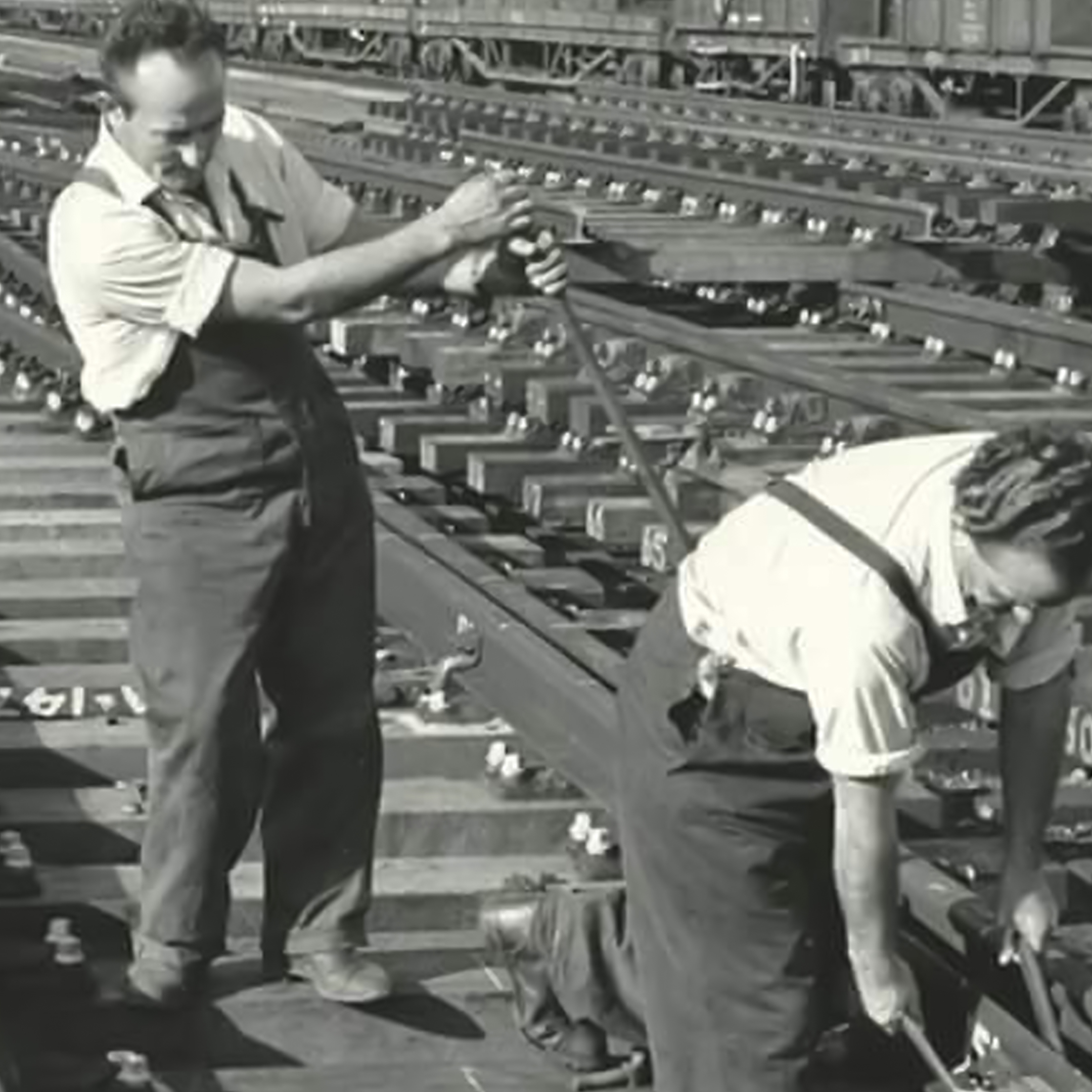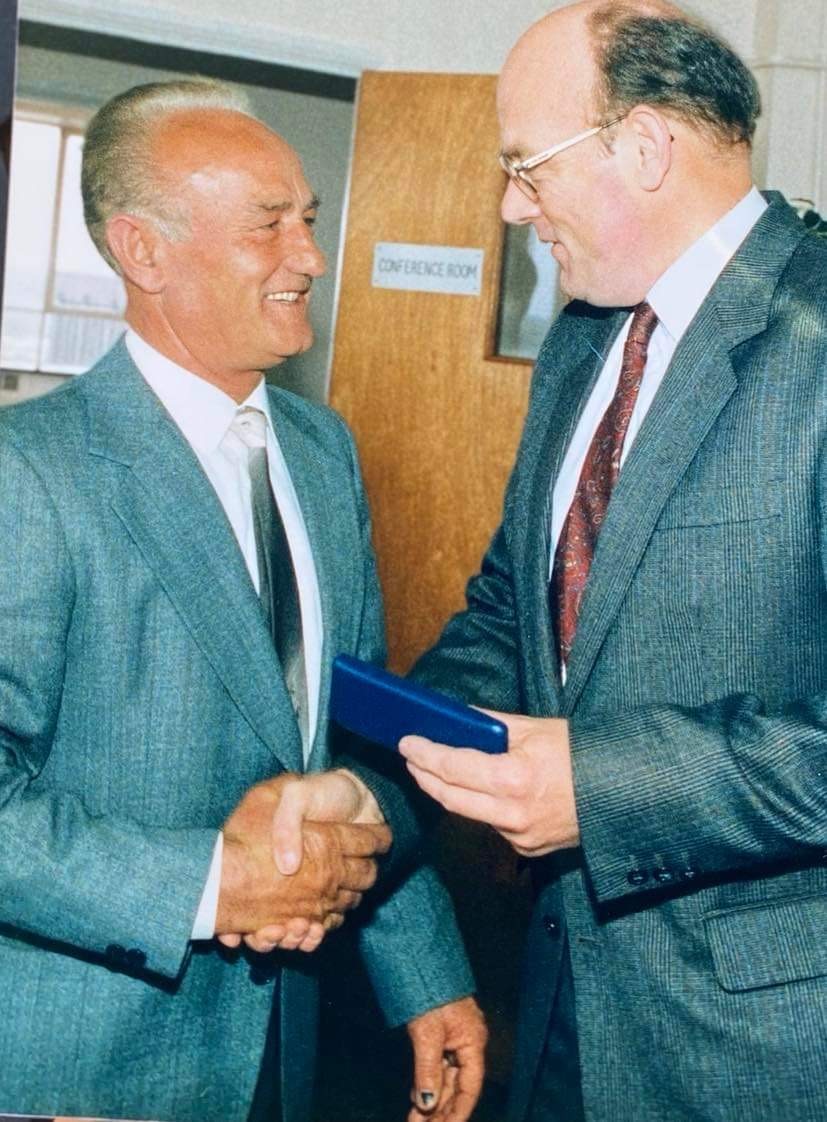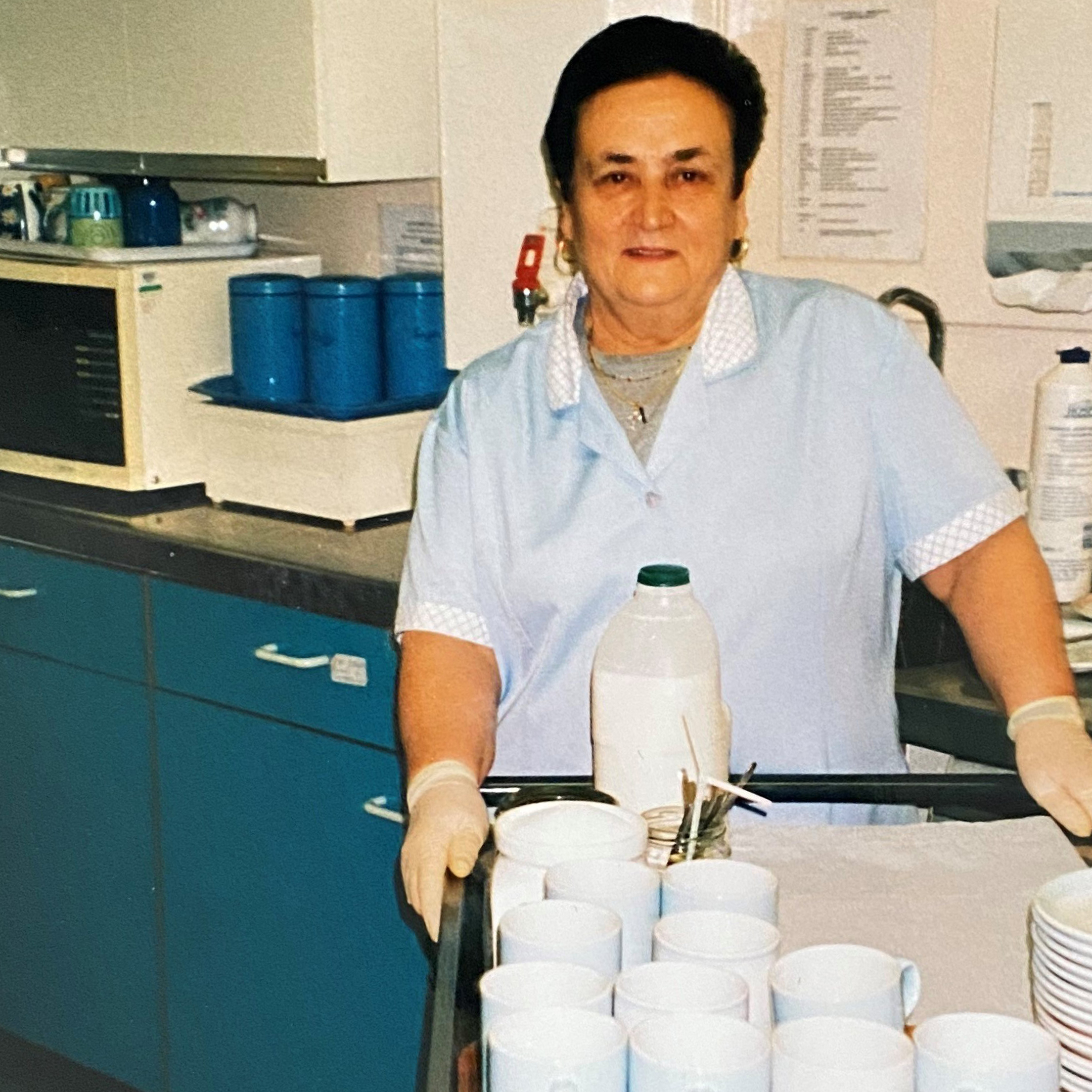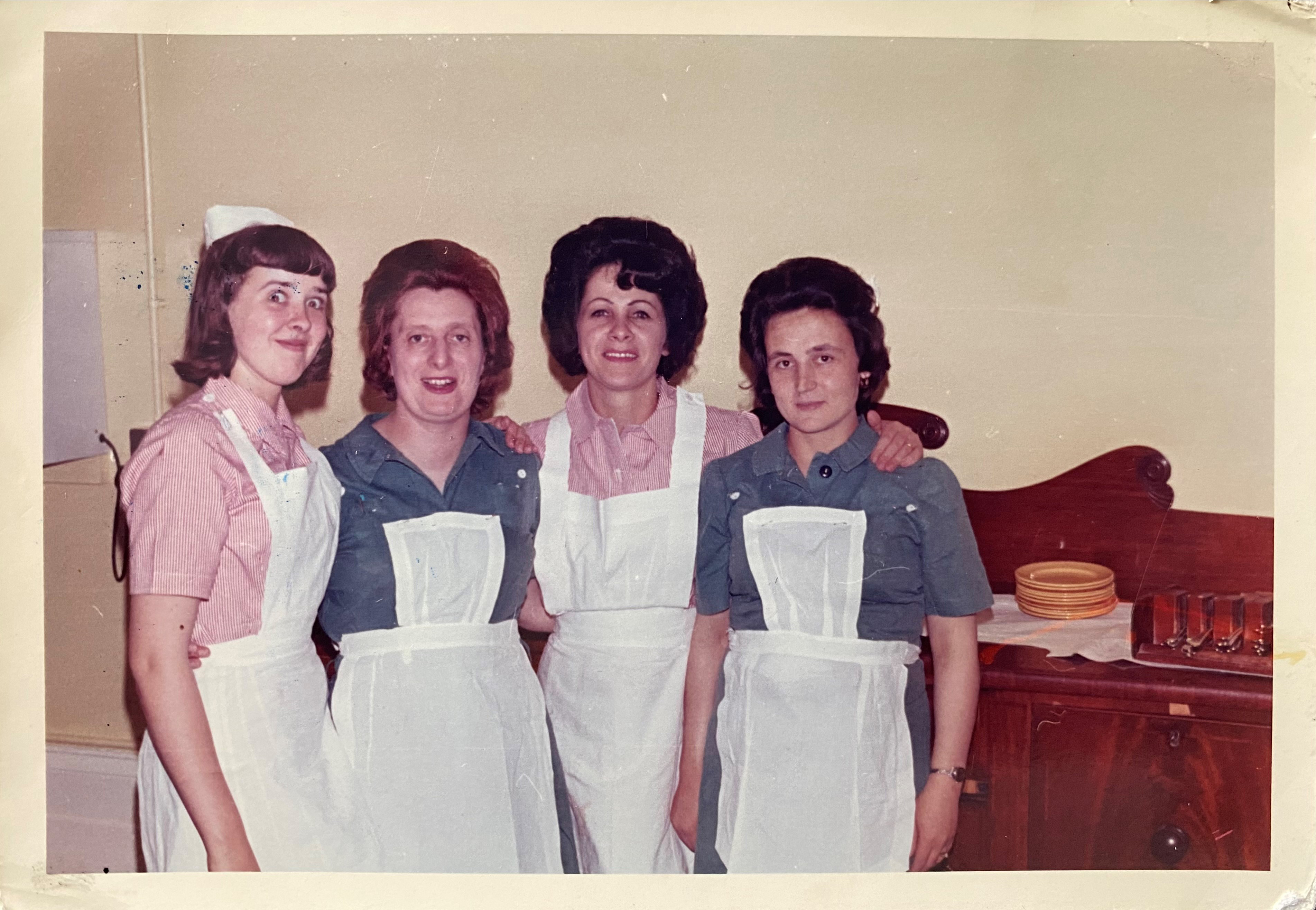After the Second World War, the British Government required all migrants to possess both a work permit and a medical certificate in order to work in Britain. Once they found employment, migrants were required to stay in their job for four years before they could move on.
Domestic work
Most Italians that arrived in Reading during the 1950s were employed as domestic workers. Their work was heavily determined by their gender. Women cooked and cleaned while men maintained the gardens. During these early post-war years, many women recall working long hours, earning less than men, and the language barrier creating a constant challenge.
Antonietta and Pietro arrived in Reading in March 1964. They left their rural Southern town of Torre Le Nocelle in Italy in search of a better life. When they arrived in the town, they worked in a private house, Albion Place on London Road. This was a residence for students at the University of Reading, providing easy access to the London Road campus.

Albion Place, 1960. (Credit: Reading Library)
Pietro and Antonietta loved working on London Road. Below, Pietro recounts his memories of London Road and the kind of work he and Antonietta carried out during their employment.
Reading's major employers
As Reading's Italian population developed their skills, they were able to take on higher paid positions within manufacturing, construction, and the recently-founded NHS. Many people found employment at Reading Station, the Royal Berkshire Hospital, and the Gillette factory.
As with domestic work, their duties were impacted by gender. Women packed stock or served hospital patients, while men repaired Reading’s railways and made bearings for cars, planes and trains.
One Italian who worked on the railway line was Armando. He and his wife Angela left southern Italy for England in the 1950s. While living in Reading, he began working on the railway in the 1960s.

Armando at work on the railway line.
In the 1990s, Armando received an award, honouring his many years of service and achievements.

Below, Angela reflects on the range of tasks involved by Armando's work.
The NHS and the Royal Berkshire Hospital
Sabatina arrived in Reading from Torre Le Nocelle, a southern Italian town, in 1961. After hearing how her sister had successfully married, found a job and bought her own house here, Sabatina followed in her footsteps and hoped to do the same.
After having various jobs in Reading over several years, Sabatina eventually gained a more permanent role as a domestic cleaner in the Royal Berkshire Hospital, where she worked for over 20 years.

Sabatina working at the Royal Berkshire Hospital.

Italian and English nurses photographed at the RBH.
Below, Mena and Giulio, Sabatina's children, remember their mother's work and what it involved.
Fashion, hairdressing, and tailoring
Other Italians started their own businesses. Many historians of Italian migration note that hairdressing is a popular career choice among the Italian community, and this holds true in Reading. Hairdressers and barbers within the Italian community were often recognised for their skill, winning awards for their cuts and styles.
Rocco arrived in Reading in 1978 at just 15 years of age. After having worked as a barber in his home town of Forenza for a few years, his family decided to send him to Reading so that he could learn the trade properly. A family friend had already left Forenza and opened a barber shop at Cemetery Junction, where Rocco first worked. After sticking at the trade, Rocco was awarded with The Evening Post Trophy for the best male cut and blow dry. Simon Giamettei, a fellow Italian, came third in this competition.
When we spoke with Rocco, he also shared his memories of a popular employer of Reading's Italians from the 1970s, a tailor on Basingstoke Road called Harry's. Known as ‘Mr Harry’s' by employees, the majority of these workers had settled in Reading after migrating from southern Italy. Below, Rocco reminisces about the history of Mr Harry's and the many Italian tailors who sought employment in Reading after the Second World War.
Adaptation and adjustment
For many Italians migrating to Reading, their new employment in the town was their first experience of a factory setting.
Some struggled with this new way of working. They were shocked at how different the pace of factory work was to the agricultural labour which characterised village life back home.
The job was so fast, if you didn’t get used to the job they would shout, “You can’t cope, you can’t cope, you need to do your job".
- Antonietta (reflecting on working in packing at the Gillette factory)
For others, English remained a challenge. While Italians learnt to speak the language very well, many still found it difficult to write. After a few years of working on London Road, Pietro worked for Vandervell in Maidenhead as a leading hand for a team of sixteen people. At the end of each shift, he was required to comment on the day’s work. Pietro cleverly overcame the language barrier and learnt how to write in English by copying phrases written by English colleagues. ‘When you changed over shifts, you had to leave a message for the next worker', Pietro said. 'I used to copy what they wrote. If the machine broke down under my watch, I then knew what to write!'
Despite these initial challenges, working in Reading provided Italian men, and especially women, with a level of independence difficult to obtain in their small, rural southern towns.
You were so excited because we never saw any money. Now you could save that £3 a week. For me, it was paradise!
- Antonietta (on receiving her first pay cheque)





